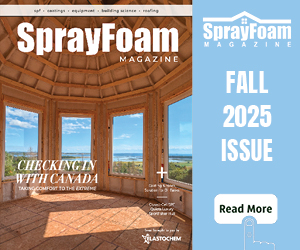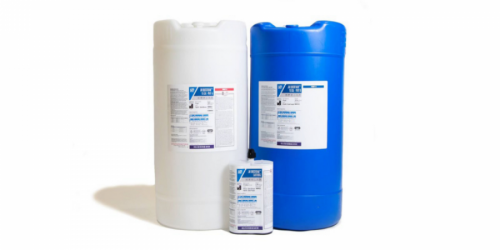Q&A Forums
Specifications Post New Topic | Post Reply
| Author | Comments |
|---|---|
|
paul callahan
Posted: Apr 20, 2009 03:00 PM
|
Specifications
I am an energy auditor in New England and I have a job where I am recomending that the thermal boundary be relocated to the roof line for the appropriate reasons, mainly allot of leaky ductwork in the attic and a trashed thermal boundary at the attic floor. I will be recomending that closed cell spray foam be applied to the underside of the roof sheathing and over the rafters (to reduce thermal bridging). I know the R value that I want but need more specifics on your product and its application to provide the client with additional specifications to bid the work and so the contractors are all on the same page. Are there different specs or is "closed cell polyurethane" spray foam enough, should a specific density be specified, low VOC specs, (I don't want VOC emissions) and specs for the application. Can it be applied directly to the plywood sheathing or does somthing else need to go in between. How about if applied to sheetrock (knee walls,) I have been told that spray foam can "warp" the sheatrock and a piece of rigid should be installed in between. This is a commercial building and it is an attic space, does an ignition barrier have to be installed? What I am looking for is to write a specification that defines the product, defines the quality of installation (Most likely Grade 1 RESNET standards) and installed in accordance with "_________" Standards. I will be recomending your product very often in my line of work so bring me up to speed on the specifics please.
|
|
mason
Posted: Apr 21, 2009 07:57 AM
|
You can obtain guide specifications for installing SPF from SPFA. Go to sprayfoam.org and download documents AY 112. and Insulating Cathedral Ceilings. It will help with issues you describe. Any SPF will have neglible VOCs. The odor would be caused by spraying off ratio or too thick. Specify no more than 1.5 inches per lift and 10 to 15 minutes between lifts (or until the exothermic heat has dissipated within the foam sufficient to spray another pass.) Be very conservative, I have seen some manufacturer's data sheets that said they could spray 3-5 inch thick lifts have problems later on. If you install it this way, it should not shrink, or warp the drywall. But do not install it into a closed cavity, the expansion of the foam will warp the drywall (can blow it right of the wall). Yes, insist on a 2 lb density foam with a compressive strength over 20 psi. I have found from my work in cold storage facilities, that the colder temperatures require a slightly higher density to provide the dimensional stability needed. You can reference ASTM C 1029 Type II foam . This has a minimum compressive strength of 25 psi. In both residential and commercial buildings, an ignition barrier is required in attics and crawl spaces. Be sure to check the date of the approvals, |
|
paul callahan
Posted: Apr 21, 2009 08:19 AM
|
Thank you for the information it is extremly helpful and just what I was looking for. Is there a particular spray on product you would recomend as an ignition barrier? |
|
mason
Posted: Apr 21, 2009 09:07 PM
|
There are 5-6 intumescent coatings that have been tested in room corner tests as ignition barriers over sprayfoam. Just be sure the foam and coating have been tested together and the code official signs off on the system before using it. You may also use a code designated igntion barrier such as 1.5 inches of mineral fiber, 1/2 wood, or 3/8 inch drywall. Check out the ICC evaluation reports on foam and coating combinations. |





























